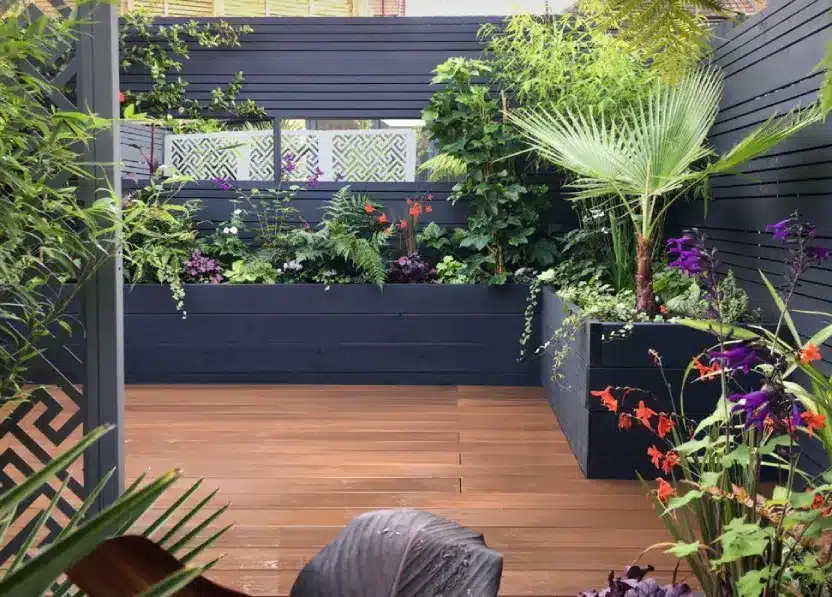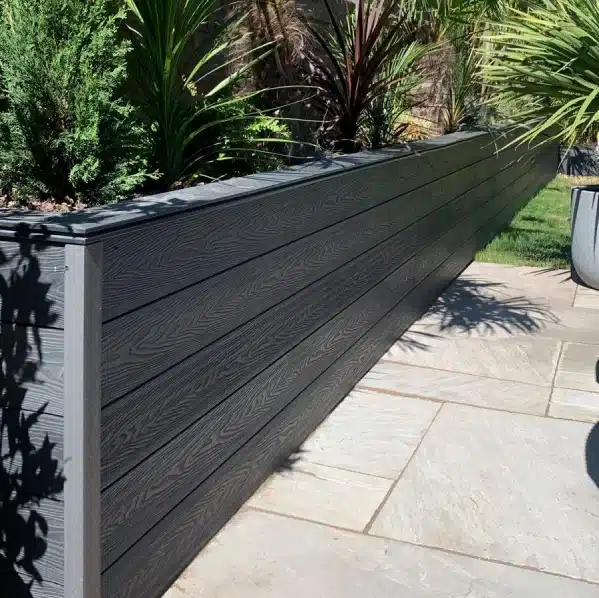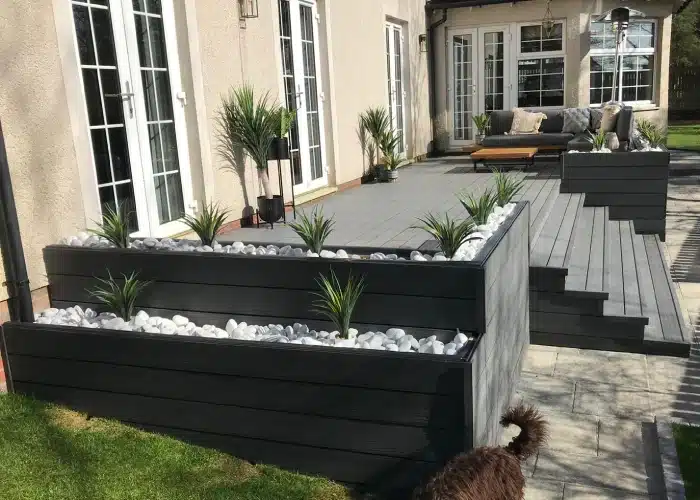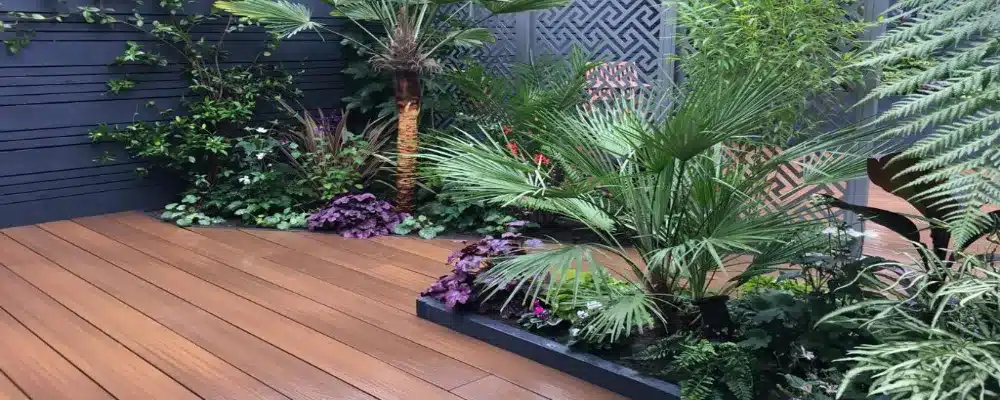Seven Reasons Why Composite Decking is Not Toxic
There are several building materials you can use to make a raised garden bed. Wood, bricks, rocks, and composite decking are the kind of building materials you can use to make a raised garden bed. Before choosing a particular building material, it is essential to know the benefits and limitations of the available options. You won’t want to choose a kind of material that leaches out toxic chemicals into the soil. What is the best material to make raised garden beds?
What is a Raised Garden Bed?
A raised garden bed is an enclosure that is lifted above the ground to grow plants, flowers, and vegetables. When choosing which type of material to use to build a raised garden bed, you should select a material that will last a long time and is safe for growing vegetation. Selecting a durable material means you won’t need to worry about spending a large sum of money maintaining your raised garden bed every year.

The Best Material to Make Raised Garden Beds
Composite decking is one of the best material to use to make raised garden beds since it is durable, resistant to weather and non-toxic. Composite decking is safe, unlike pressure-treated wood, which contains toxic chemicals that can leach into the soil. The toxic chemicals used in pressure-treated woods especially older CCA treated wood are harmful to the environment, newer editions of pressure treated wood (ACQ) do have lower risk and reports do advise they can be used, as long you aren’t growing vegetables, herbs etc and to separate the soil from the wood, we personally wouldn’t advise, one due to the risk and second its more labour and preperation.
Composite decking consists of wood fibres and recycled plastic, with no toxic chemicals used during the production process, which means it is safe to use for growing plants and is environmentally friendly. Also, composites are resistant to moisture and the elements, meaning they won’t crack, rot, or decay. This makes it a very durable material. Composite decking is resistant to insects too. All these properties of composite decking make it one of the best material to use for raised garden beds.

Benefits of Using the Best Material to Make Raised Garden Beds
- Environmentally friendly – If you use composite decking to make a raised garden bed, you don’t have to worry about chemicals getting into the soil. Decking manufacturers produce composite decking from wood fibres and recycled plastics. These materials are environmentally friendly that do not contain chemicals to enhance its performance and are safer to use for garden beds and planters.
- Durable – Composite decking is long-lasting compared to other garden bed materials. Once installed, you don’t have to worry about replacing the sidings or staining your garden bed. You can use a raised garden bed with composite decking for several years.
- Low maintenance – If you use composite decking to construct a garden bed, you don’t need to stain, paint or seal it annually. A simple clean with hot soapy water and a soft brush is all that’s needed to retain its appearance. If you use composite decking, your raised garden bed will last for years, and you won’t have to spend any money on maintenance.
- Variety of colours – Composite decking comes in various colours and will keep its colour for decades, unlike wood, which can quickly fade to a dull grey colour. This means that you will most likely find composite decking in a colour that will match the current aesthetic of your house.
Ways to Build a Raised Garden Bed with Composite Decking
You can build a raised garden bed from leftover materials from your decking or purposely purchased composite decking.
Step-by-step building of a raised garden bed:
Get the materials ready
First, gather all the materials you will need to make the planters with composite decking. The materials you will need to make a planter with decking are a composite decking boards, a power or manual drill, screws, a screwdriver, a handsaw, measuring tape, and base material. Once you have all the materials needed, you can start building your planter.

Ready Your Base Materials
Start by laying down or readying the base materials of your planter. The base should be gravel, landscape fabric, or cardboard. Landscape fabric in some experts view aren’t classed as eco friendly and some prefer cardboard to sit at the bottom base of raised garden bed, as the cardboard will breakdown over time and great for worms, where landscape fabric isn’t, of course this all depends what your growing.
Create the holes
Using a measuring tape, calculate the length of the composite board and cut it to your preferred size with a handsaw or circular saw. After cutting the boards to size, use a manual or power drill to make pilot holes in two of the decking boards. The pilot holes will keep the composite decking from cracking when you insert a screw in it. Make three pilot holes on two of the shorter boards. Create these holes from the end edge of the board.
Fasten the boards
Attach the boards with galvanized screws. Galvanised screws are suitable for planters; they won’t rust when exposed to air and moisture. Then, line the boards up so that you can position the pilot holes on the outside corners. Using a power or manual drill to fasten the screws to the boards. If you don’t have a drill, use a screwdriver instead.
Attach the boards
Place the your chosen base inside the planter. At this stand you can add chicken wire to prevent rodents but still allow earth worms to access.
If your garden bed is on a balcony you will need to leave gaps or grid to enable your plants to breathe. Once you’ve attached the your chosen base and soil for your planter or raised garden bed, your composite decking planters are ready.
Fill it with soil
Now that you have finished making your composite decking planters, it’s time to fill them with soil. Fill the planter with your garden soil. Now you are ready to start planting.
You can also add a grid at this stage if you choose and depending on size. You can do this by using natural twine and fix into place by hooks, screws or nails.
Conclusion
If you adhere to the guidelines laid out above, you will be able to make beautiful composite decking planters with ease. Composite decking is available in multiple colours, meaning you can choose a colour best suited to your personal aesthetic. Building a raised garden bed feature will enhance your outdoor space and is a perfect addition to any size garden.
Composite decking boards are the best choice of materials to build a raised garden bed or planter. They wont leach chemicals in to the soil or experience any damage from insects, rot or decay and will last for years. You can buy a composite decking planter kit in store for self assembly or build one from off cuts or leftover composite decking boards.
How Do You Hide the Ends of Composite Decking




